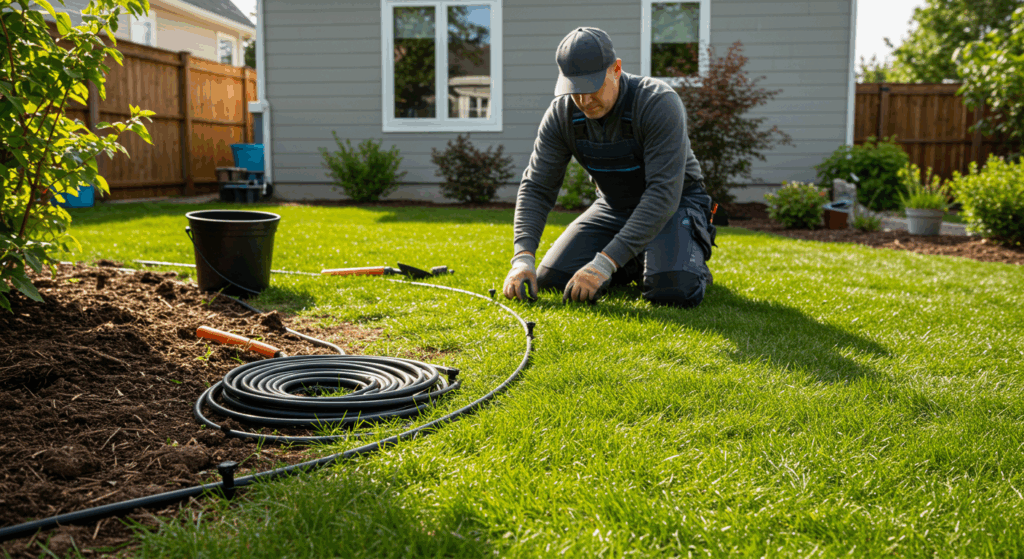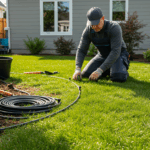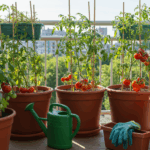Introduction
Imagine a world where water scarcity affects nearly two-thirds of the global population. Unfortunately, this is not some distant scenario but a looming reality.
As climate change intensifies, erratic weather patterns worsen, putting immense pressure on our already dwindling water resources.
Amidst this urgent challenge, the ingenuity of a drip irrigation system emerges as a beacon of hope. This innovative agricultural technique not only promises efficient water usage but also enhances crop yields, offering a sustainable solution for the world’s food and water crises.
Join us as we delve into the intricacies of this vital system, exploring how it can indeed change the course of agriculture and mitigate water scarcity.
Understanding Drip Irrigation Systems
Drip irrigation, also known as trickle irrigation, is an agricultural practice designed to provide precise water and nutrient delivery directly to the root zone of plants.
This method stands out for its efficiency in ensuring that crops receive adequate moisture without wasteful runoff or evaporation losses.
Unlike traditional irrigation techniques that water the entire field, drip irrigation targets each plant individually, resulting in water savings of up to 50% compared to surface irrigation.
| Aspect | Traditional Irrigation | Drip Irrigation |
|---|---|---|
| Water Consumption | High | Low |
| Crop Yield | Standard | Enhanced |
| Initial Cost | Low | High |
| Labor Requirement | High | Low |
| Water Efficiency | Poor | Excellent |
The intricate network of pipes, tubing, and emitters allows for controlled water application, minimizing waste while maximizing output.
This precision is particularly advantageous in arid and semi-arid regions where water resources are scarce.
The adaptability of drip irrigation to various terrains and crop types further underscores its importance as a versatile farming solution.
Components of a Drip Irrigation System
The effectiveness of a drip irrigation system relies on a few key components working in harmony.
These essential parts include a water source, often connected to a pump or gravity-fed system that provides consistent pressure, and filtration units to prevent blockages caused by debris. Tubing, usually made from polyethylene, forms the network that transports water to the emitters, which are integral in regulating flow rates and pressure.
Additionally, pressure regulators ensure that water is evenly distributed, preventing plant stress and optimizing growth conditions.
The meticulous design demands regular maintenance to sustain functionality, with components checked periodically to mitigate wear and tear.
Choosing the right combination of components tailored to specific site conditions is crucial for maximizing system performance and achieving desired agricultural outcomes.
Benefits of Drip Irrigation
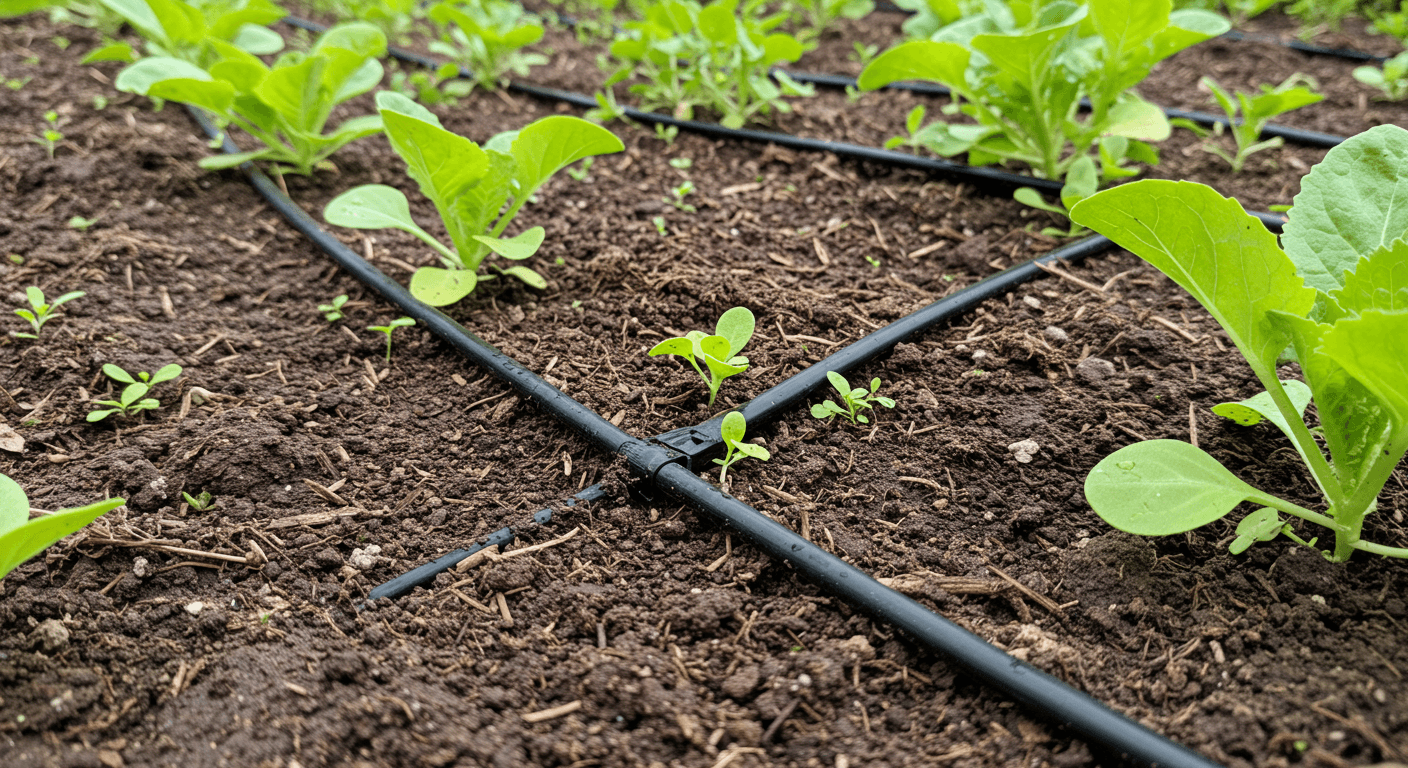
Drip irrigation is celebrated for its numerous environmental and economic benefits.
By delivering water directly to plant roots, it substantially reduces water wastage and minimizes soil erosion. This is particularly important in sandy or loamy soils prone to nutrient leaching.
Furthermore, the precise application of water mitigates the spread of weeds, as non-targeted areas remain dry, curbing unwanted plant growth and reducing herbicide use.
“Drip irrigation represents sustainable farming at its best, conserving water while increasing agricultural productivity.” – Jean Mayer
On the economic front, the adoption of drip irrigation translates to increased crop yields and reduced input costs over time.
Farmers benefit from consistent crop quality and reduced labor requirements, as the system automates watering tasks, allowing them to focus on other critical farm management activities.
The long-term savings on water and chemicals often offset the initial investment in infrastructure, making the system a cost-effective choice for progressive farmers.
Challenges and Drawbacks
While drip irrigation offers considerable advantages, it is not devoid of challenges. The initial cost is a common deterrent, with infrastructure setup and maintenance requiring substantial investment.
Smallholder farmers in developing regions often find these expenses prohibitive without external financial support or subsidies.
Additionally, the system’s reliance on electricity or fuel for pumping water makes it vulnerable to power supply issues, particularly in remote areas.
- 1- Regular maintenance is also essential to prevent clogging, as emitters can become obstructed by mineral deposits or organic matter, leading to inconsistent water delivery.
- 2- Limited knowledge and technical expertise about drip irrigation systems in some farming communities can impede widespread adoption and effective utilization.
- 3- In regions with hard water, mineral buildup in the system can pose ongoing operational challenges.
- 4- Finally, despite drip irrigation’s flexibility, certain soil types may still struggle with efficient water absorption, impacting system efficacy.
Installation and Setup
Installing a drip irrigation system necessitates careful planning and attention to detail. The process begins with a thorough site assessment to determine soil characteristics, crop water requirements, and field layout. This information aids in designing a system tailor-made to specific conditions, ensuring optimal performance.
Selecting the right type of emitters is crucial, each catering to different plant needs and soil types. After design finalization, installation commences with laying the main lines, often sub-surface to minimize exposure and potential damage.
Attention must be given to pressure regulation to ensure uniform water distribution across the field. Finally, testing the system for leaks and flow consistency is essential before commencing regular use.
This methodical approach ensures that the drip irrigation system functions efficiently and maximizes agricultural gains.
Technological Advancements in Drip Irrigation
The evolution of technology has significantly enhanced the capabilities of drip irrigation systems. The integration of smart sensors and control systems allows for real-time monitoring and management, optimizing water usage based on current climatic conditions and plant needs.
These smart systems can automatically adjust water delivery, leading to more efficient resource use while minimizing manual intervention.
Further advancements include the development of self-cleaning emitters and pressure-compensating technology, which maintains consistent water flow even in challenging terrains with uneven pressure distribution.
The adoption of solar-powered pumps offers an eco-friendly alternative, especially in off-grid locations, reducing dependency on conventional energy sources.
These innovations continue to drive the sustainability and accessibility of drip irrigation, encouraging broader adoption across diverse agricultural landscapes.
Environmental Impact of Drip Irrigation
Drip irrigation plays a significant role in promoting sustainable agricultural practices.
By optimizing water use, this system helps conserve vital resources, reducing the environmental footprint of farming activities. It decreases the reliance on chemical inputs due to less weed proliferation and nutrient leaching, contributing to healthier soil ecosystems.
This method also facilitates carbon sequestration, as well-maintained soils better capture and store carbon, aiding in climate change mitigation efforts.
Furthermore, reducing runoff and soil erosion helps preserve local waterways, protecting aquatic ecosystems from fertilizer and pesticide contamination.
The systemic approach of drip irrigation aligns with environmental goals and supports global initiatives aiming to combat climate change and enhance food security.
Case Studies: Successful Implementations
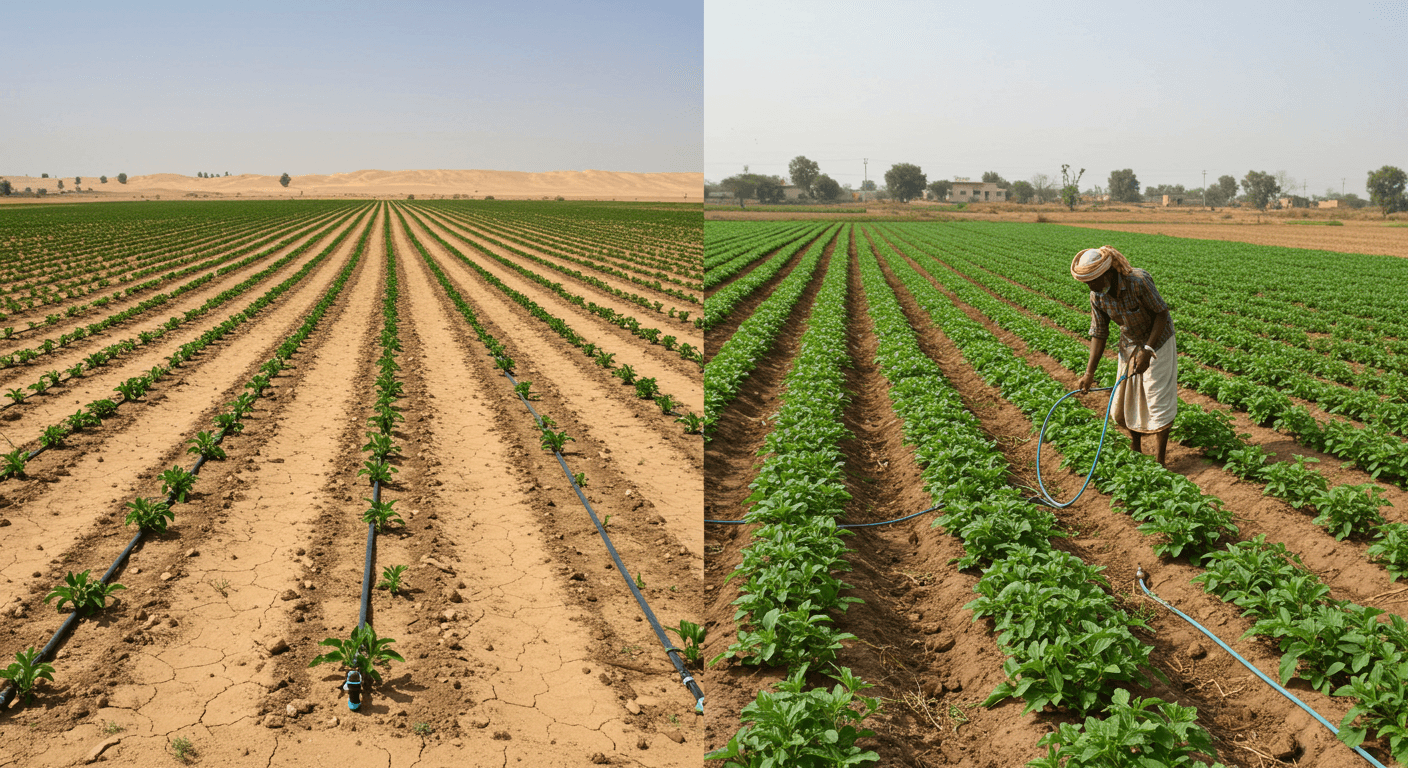
Various regions around the world have successfully implemented drip irrigation, providing valuable insights into its practical benefits. In Israel, a country notorious for its arid climate, widespread adoption of drip irrigation has transformed desert landscapes into productive farmland, significantly boosting food production.
This success story underscores the system’s potential to break geographical limitations traditionally imposed on agriculture.
In India, smallholder farmers have reported yield increases of up to 70% after switching to drip irrigation, coupled with significant water savings.
Government initiatives supporting affordable system installations have played a vital role in this shift, empowering farmers to improve their livelihoods while conserving resources.
Such case studies highlight drip irrigation’s transformative impact on both local communities and broader agricultural practices.
FAQ – Common Questions
How does drip irrigation save water compared to other methods?
Drip irrigation saves water by delivering it precisely to the plant’s root zone, minimizing evaporation and runoff common in traditional methods like furrow or sprinkler irrigation.
Is drip irrigation suitable for all crops?
While drip irrigation is highly versatile and can be adapted for many crops, certain dense or closely planted crops may require alternative methods for optimal water distribution.
Can drip irrigation systems operate on uneven terrain?
Yes, modern drip systems with pressure-regulating emitters are specifically designed to provide consistent water delivery even on uneven slopes.
What maintenance does a drip irrigation system require?
Regular checks for clogs, leaks, and system pressure are necessary, along with periodic cleaning of filters and emitters to maintain optimal functionality.
How economically viable is switching to drip irrigation?
Despite high initial costs, long-term savings on water and labor often make drip irrigation economically viable, primarily when increased yields and crop quality are considered.
Conclusion
Drip irrigation stands as a cornerstone in the quest for sustainable agriculture amidst escalating water scarcity and environmental concerns.
Its efficient use of resources offers an eco-friendly alternative to traditional irrigation methods, with numerous environmental and economic benefits.
The continuing evolution of technological advancements further enhances its effectiveness and accessibility, making it a critical tool in meeting global food demands.
Yet, challenges such as initial costs and maintenance requirements need addressing through education, innovation, and policy support to ensure broader adoption.
Drip irrigation offers a compelling glimpse into the future of farming, demonstrating that sustainable solutions can lead the charge in overcoming some of the most pressing agricultural challenges of our time.

